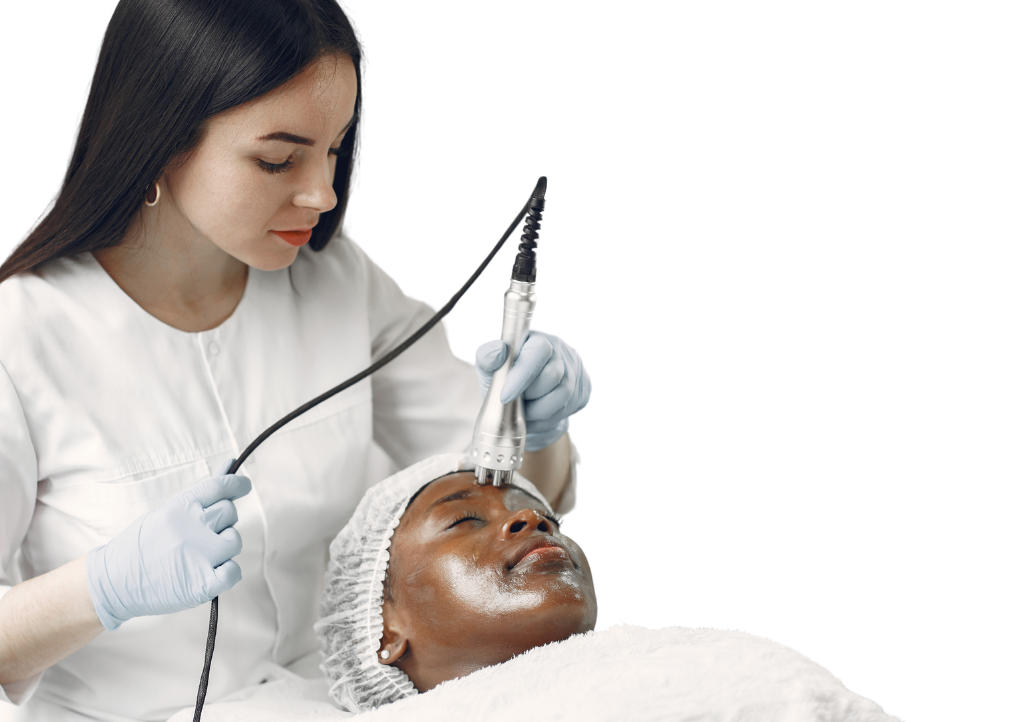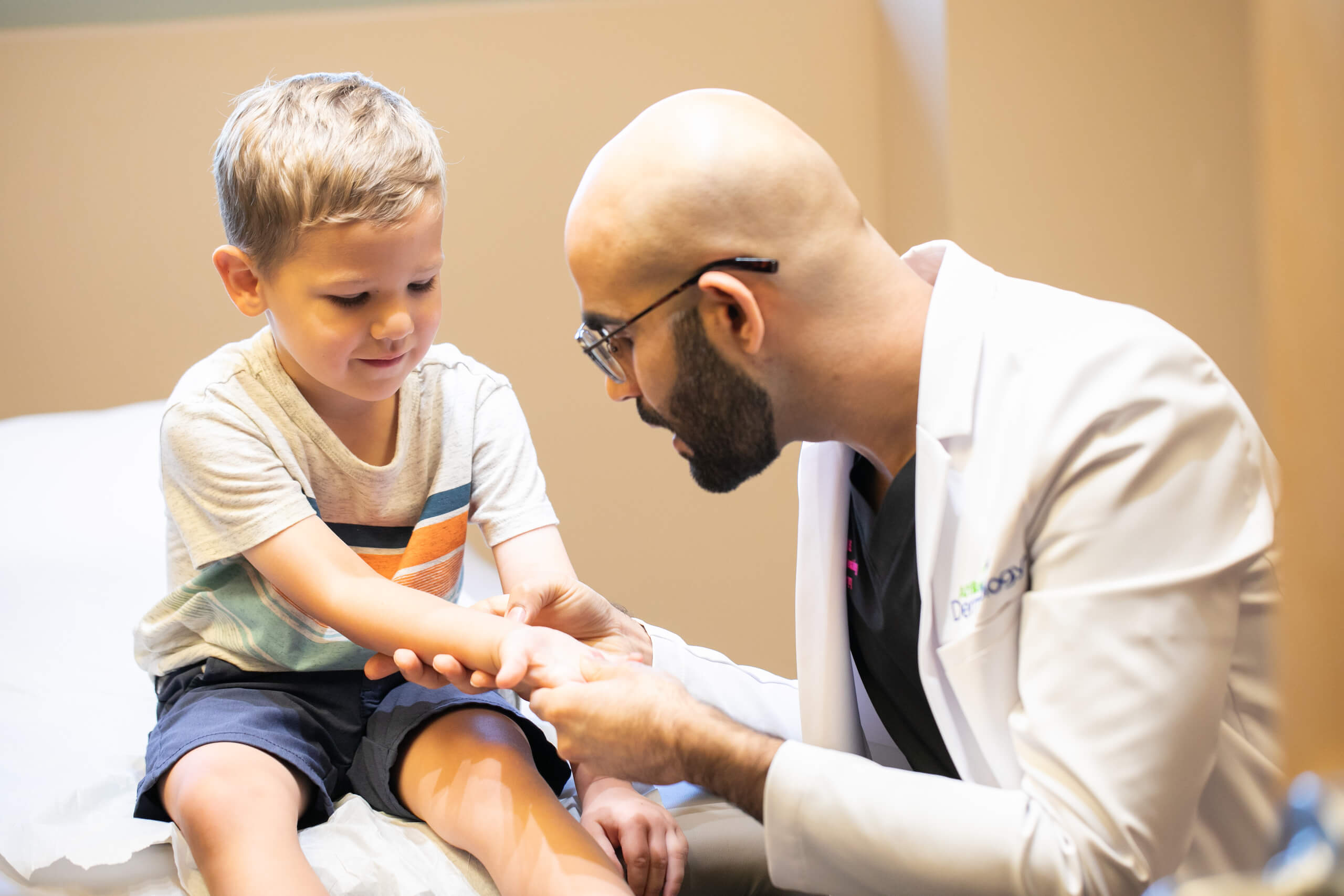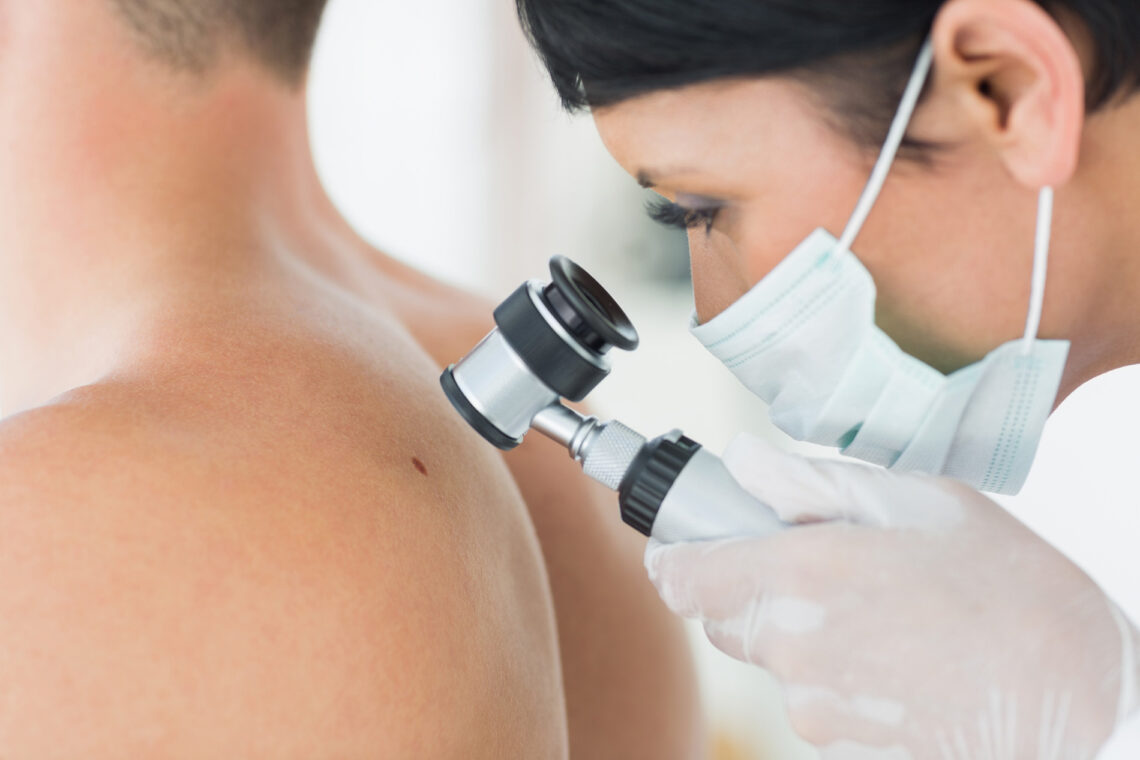The Duty of a Skin Doctor in Diagnosing and Dealing With Various Skin Disorders
The function of a dermatologist expands far past basic skin treatment; it encompasses the complex processes of identifying and treating a large variety of skin disorders. The complexity of skin problems commonly requires a diverse strategy that includes not only clinical interventions however additionally client education and learning and preventative strategies.

Value of Skin-related Competence
The experience of dermatologists is vital in the medical diagnosis and management of skin disorders, as they possess specialized understanding that expands beyond basic clinical training. This innovative understanding is essential for precisely determining a large range of skin conditions, which frequently provide with overlapping symptoms that can confuse non-specialist practitioners. Skin specialists are educated to separate in between different skin conditions, making sure suitable treatment plans are executed swiftly.
Furthermore, the field of dermatology encompasses a distinct combination of clinical skills and advanced innovation. Dermatologists utilize advanced analysis devices, such as dermatoscopes and skin biopsies, to examine skin lesions and determine their nature. This technical efficiency permits early discovery of possibly severe conditions, including skin cancers cells, which can dramatically improve patient end results.

Typical Skin Disorders Detected
Many skin disorders can offer with differing degrees of seriousness and complexity, making dermatological proficiency vital for accurate diagnosis and administration. Amongst the most widespread problems are acne vulgaris, dermatitis, psoriasis, and dermatitis.
Acne vulgaris, identified by the existence of pustules, papules, and comedones, mainly impacts adolescents but can continue right into their adult years. Dermatitis, or atopic dermatitis, is a chronic inflammatory condition that causes completely dry, scratchy, and inflamed skin. Psoriasis is an autoimmune disorder that materializes as red, scaly plaques, mostly on extensor surface areas, and can considerably affect the lifestyle.
Various other usual disorders include rosacea, which provides with facial flushing and noticeable blood vessels, and seborrheic dermatitis, commonly causing dandruff and oily spots on the scalp. Fungal infections, such as tinea pedis (professional athlete's foot) and tinea corporis (ringworm), are also frequently experienced.
These differed problems call for a thorough understanding of pathophysiology, along with expertise of healing options, to guide efficient treatment methods - Dermatologist Raleigh NC. With precise medical diagnosis, skin doctors can give customized monitoring plans that deal with both the symptoms and underlying causes of these typical skin conditions
Analysis Methods Utilized
Just how do skin doctors properly diagnose different skin disorders? Dermatologists use a mix of scientific analyses, analysis devices, and specialized strategies to make sure specific recognition of skin conditions. The initial action commonly includes a thorough case history and checkup. Throughout this procedure, dermatologists assess the patient's signs and symptoms, beginning, duration, and any kind of prospective triggers.
Among the main diagnostic methods is dermoscopy, which utilizes a handheld tool to amplify skin lesions, allowing for thorough exam of structures not visible to the naked eye. Additionally, skin biopsies are frequently carried out, in which a tiny example of skin is removed for histopathological analysis. This strategy is invaluable for detecting conditions such as cancer malignancy and other skin cancers cells.
Spot testing is one more essential method used to identify get in touch with dermatitis by revealing small amounts of prospective irritants to the skin. Research laboratory tests, including blood examinations and societies, might be conducted to rule out systemic problems or infections. Jointly, these diagnostic techniques enable dermatologists to formulate a detailed understanding of skin problems, bring about accurate diagnoses and informed patient monitoring.

Therapy Alternatives Available
A large selection of therapy options is offered why not look here for taking care of skin problems, tailored to the certain problem and private client requirements. Skin doctors employ both systemic and topical treatments, depending upon the extent and type of skin problem. Topical treatments, such as corticosteroids, retinoids, and calcineurin preventions, are frequently suggested for problems like acne, psoriasis, and eczema. These agents target inflammation and promote skin healing.
For a lot more severe conditions, systemic therapies might be required. These include oral drugs such as prescription antibiotics for bacterial infections and immunosuppressants for autoimmune disorders. Biologics, a newer course of drugs, have revealed efficacy in dealing with chronic inflammatory conditions like psoriasis and atopic dermatitis.
Along with pharmacologic interventions, skin specialists may recommend step-by-step alternatives such as laser phototherapy, treatment, or chemical peels (Dermatologist Raleigh NC). These procedures can deal with coloring concerns, acne scarring, and various other skin irregularities effectively
Additionally, way of life modifications, consisting of proper skin care routines and sun security, play a critical role in the overall management of skin problems. By combining these treatment techniques, dermatologists intend to enhance client results and improve lifestyle for those impacted by skin problem.
Person Education and Assistance
Empowerment through understanding is important in the monitoring of skin conditions, as patient education and learning and support substantially influence treatment end results. Dermatologists play an essential role in supplying patients with detailed information about their problems, therapy options, and self-care methods. Effective communication cultivates a collaborative atmosphere where people can actively take part in their Go Here own treatment.

Support prolongs beyond education and learning; it incorporates psychological reassurance and ongoing motivation. Skin doctors need to develop a safe room for patients to express their concerns and ask concerns. Resources such as informational pamphlets, web sites, and support system can additionally equip individuals, allowing them to link with others dealing with comparable difficulties.
Eventually, a knowledgeable see here individual is a lot more likely to take part in their treatment trip, bring about far better adherence, satisfaction, and improved wellness end results. The skin doctor's function in client education and support is basic to maximizing the administration of skin disorders.
Conclusion
To conclude, skin doctors play an important role in the reliable medical diagnosis and treatment of a large range of skin problems. Their specific know-how, integrated with advanced analysis techniques and customized treatment plans, makes certain detailed care for people. Moreover, the emphasis on person education fosters positive management of skin wellness, equipping individuals to take enlightened actions regarding their skincare programs. The payments of skin doctors considerably improve the lifestyle for those influenced by skin conditions.
The role of a skin doctor prolongs far beyond standard skin care; it incorporates the complex processes of diagnosing and treating a wide array of skin disorders. Skin doctors use sophisticated diagnostic tools, such as dermatoscopes and skin biopsies, to evaluate skin lesions and establish their nature. Inevitably, the specialized training and experience of skin doctors are indispensable in giving thorough treatment for clients with skin disorders.
Additionally, skin biopsies are regularly done, wherein a little example of skin is removed for histopathological evaluation. Jointly, these diagnostic methods allow dermatologists to create a comprehensive understanding of skin disorders, leading to accurate diagnoses and informed patient management.